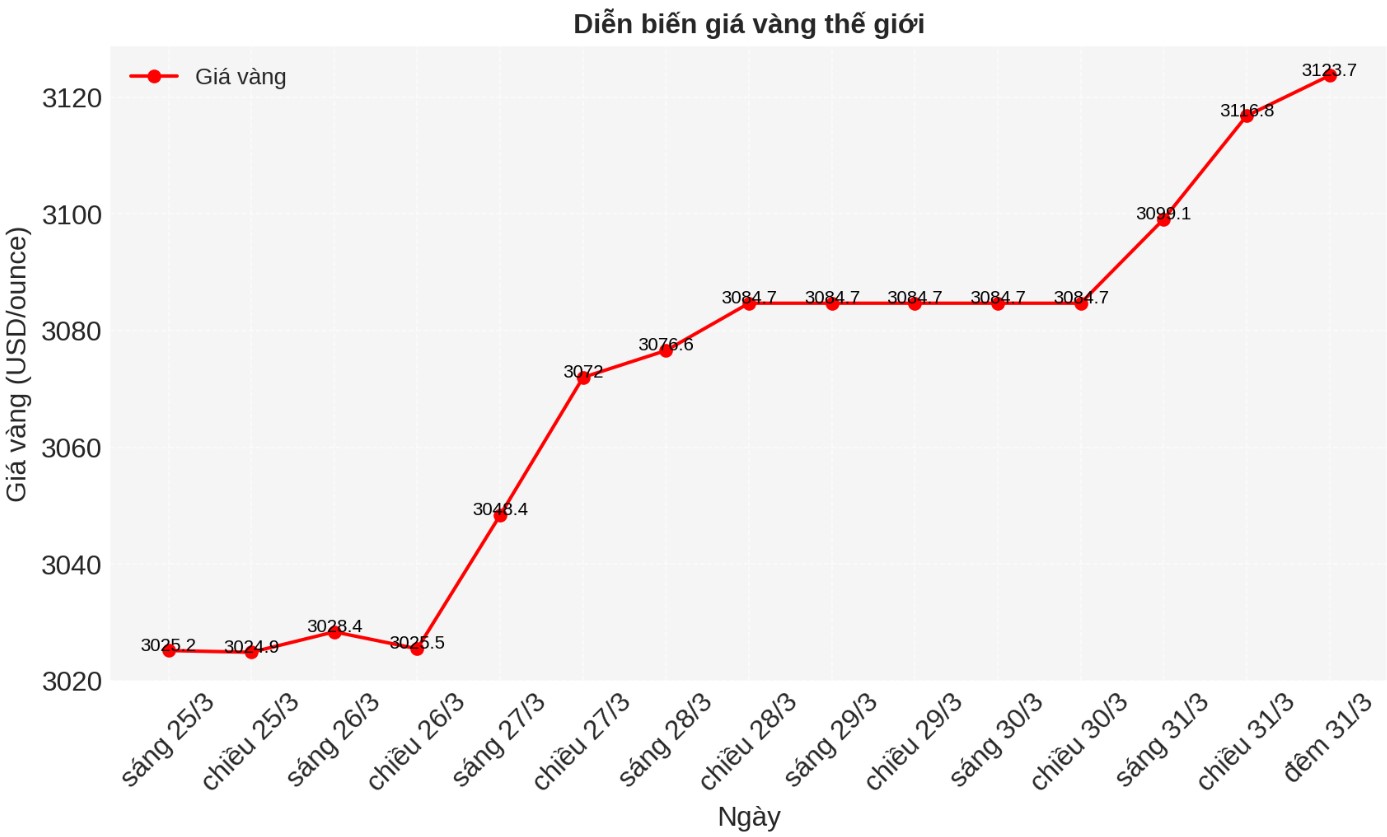Gold ETFs attract cash flow strongly
Gold ETFs continue to record large capital flows as gold prices increase amid concerns about trade tariffs. Meanwhile, investment in silver has not caught up, although the metal has a superior price increase than gold in the first quarter of 2025 - according to analysis by experts at Heraeus.
In the latest report, analysts noted that the People's Bank of China is slowing down the pace of gold purchases.
In February, the Peoples Bank of China reported adding 16,000 ounces of gold to its reserves. This is the fourth consecutive month that the bank has added gold since its buying activity resumed in November last year.
Previously, from November 2022 to March 2024, China bought more than 1 million ounces of gold, an average of 59,000 ounces/month. However, as gold prices increase, the scale of purchases decreases. Currently, with gold prices exceeding $3,000/ounce, the amount of gold purchased is only an average of 20,000 ounces/month since November 2024.

They emphasized that the buybacks are not necessarily related to current gold prices. However, central bank demand has supported gold prices over the past 24 months, and a decrease in purchases could undermine this momentum.
Meanwhile, institutional investors increased their allocation to gold as prices continued to increase: Gold ETFs have recorded strong capital flows in the past month. On March 21, these funds added about 23 tonnes of gold, their biggest one-day increase since 2022.
In the first quarter of 2025, gold ETFs attracted about 152 tons of net, bringing their total holdings to their highest level since September 2023.
However, gold holdings in global ETFs are still lower than the record high set in November 2020, when gold prices were below $1,900/ounce. Although the actual holding ratio for gold is lower, the total value of assets under management (AUM) of gold ETFs globally is currently at a record high. As of last Friday, the total holding value reached 268 billion USD".
Capital flows continue to flow into gold ETFs may continue to support gold prices, and although prices have now surpassed $3,000/ounce, investors are still looking for profit-taking opportunities after 18 months of strong increases. Mr. Donald Trumps new tariff policy continues to increase market instability, when the 25% auto import tax was officially announced. This has helped spot gold prices increase to a new record high of $3,087/ounce last weekend, said analysts.
The upward trend continued as gold prices surpassed $3,100/ounce on Sunday evening, before reaching a new peak of $3,128.13/ounce on Monday morning. Spot gold prices were then traded at $3,108.22 an ounce, up 0.74% in the session.
Silver increases sharply but has not attracted capital
Although silver is the metal with the strongest price increase in the first quarter, investment in silver is still not really vibrant.
As of last weekend, silver prices have risen 17.9% since the beginning of the year even higher than golds 17.5% gain despite the metal continuously reaching new peaks. The first quarter is usually the time when silver has progressed well, but according to data over the past 10 years, the second quarter is often less active.
Despite the strong increase in silver prices, holdings in silver ETFs have increased slightly by 0.32% (2.2 million ounces) since the beginning of the year, while gold ETFs have increased by 5.9% over the same period.
However, experts say there is still room for investors to pay attention to silver, helping prices continue to be supported in the next few months. Last week, silver prices rose 3%, approaching a 13-year peak of 34.87 USD/ounce set in October 2024. However, the resistance zone of 34-35 USD/ounce is showing quite solidity in the short term.
Silver had a strong sell-off on Monday morning, when prices fell from over 34.1 USD/ounce at 9:00 a.m. EST to a low of 33.507 USD/ounce just 15 minutes after the North American market opened, but have since recovered.











